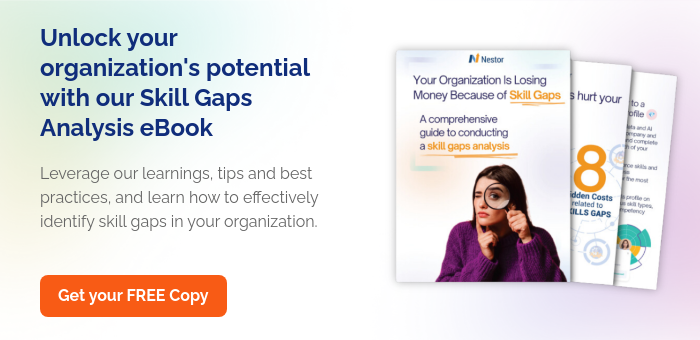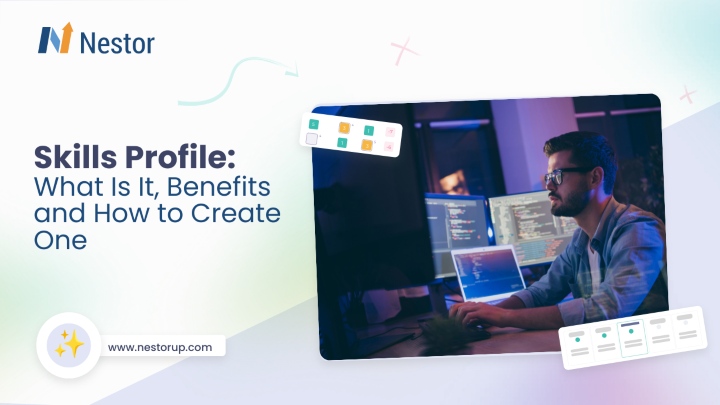Contents
Despite significant investments in Learning and Development (L&D) programs, many companies still find themselves struggling to achieve meaningful transformations and maximize their learning ROI. This issue can be largely attributed to the tendency of many L&D initiatives to focus on skills that were relevant in the past, rather than preparing employees for the future.
A critical insight from the SHRM Workplace Learning and Development Trends Report underscores this point, emphasizing that the main reason for the failure of many L&D programs is their backward-looking focus. In today’s fast-paced digital environment, organizations need to foster adaptability and agility. This means not only keeping up with technological advancements but also mapping out career paths tailored to each individual’s unique talents and aspirations. Such an approach empowers employees to grow within their roles and equips them to seize new opportunities as they arise, ensuring that the organization as a whole can remain competitive and innovative.
84% of organizations don’t offer employees development opportunities aligned with organizational goals.
— Capability Academies: A New Approach for Critical Skills Development, Josh Bersin

This gap indicates a disconnect between L&D programs and the strategic needs of the business, further exacerbating the problem. Without alignment, even the most well-intentioned L&D efforts can fall short, failing to equip employees with the skills needed to drive organizational success and achieve a substantial learning ROI.
In order to address these challenges and enhance learning ROI, organizations must pivot towards a skills-based approach to learning, leveraging a comprehensive skills-based talent management platform. Such a platform integrates learning and development initiatives with talent management processes, providing a holistic view of employee skills, potential, and career aspirations. By facilitating personalized learning pathways, continuous feedback, and skill assessments, a platform focused on skills, empowers employees to acquire and apply relevant skills in real-time, maximizing their contribution to organizational objectives.
Additionally, it enables HR and L&D professionals to identify skill gaps, forecast future talent needs, and tailor development programs accordingly. Intrigued to learn how your organization can transform its L&D strategy to drive higher learning ROI and stay ahead in today’s dynamic market? Dive into our exploration of the key benefits of adopting a skills-based approach to learning and discover how a cutting-edge talent management platform can revolutionize your workforce development efforts.
How to Implement a Skills-Based Approach to Learning
When we discuss adopting a skills-based approach to learning and development, we’re essentially delving into a philosophy that centers around people—the beating heart of any organization. It’s not just about ticking off boxes or following a predetermined curriculum; it revolves around a deep understanding of each individual within our organization—their aspirations, strengths, and areas for growth. It’s about crafting learning experiences that resonate with them on a deeply personal level, fostering a sense of fulfillment and purpose.
But it’s not just about the individual—it’s also about the collective strength of the organization as a whole. By investing in skills development, organizations can build a workforce that is not only highly skilled but also highly engaged and motivated.
Organizations that realign HR processes to match skill needs can boost employee engagement by 50 percent, lower training and development program costs by 50 percent, and raise productivity by 40 percent.
— McKinsey & Company
These statistics aren’t just numbers on a page; they represent real people whose lives and careers are being transformed for the better.
Consider the ripple effect: when employees feel valued and supported, they’re more likely to be engaged and motivated. This heightened sense of engagement translates into increased productivity and a greater commitment to the organization’s goals. Ultimately, it’s the collective effort of a motivated and empowered workforce that propels the organization forward, unlocking new levels of innovation and success.
As organizations invest in skills development, they’re not just fostering individual growth—they’re also maximizing their learning ROI. By nurturing a workforce that is continuously expanding its capabilities and contributing to the organization’s success, organizations ensure that every investment in learning and development yields significant returns, both in terms of employee satisfaction and organizational performance.
1. The Starting Point: What You Want to Achieve
Embarking on a journey of learning and development requires a clear understanding of our objectives, which encompass a spectrum of goals aimed at enhancing both individual and organizational effectiveness. This not only involves addressing current skill gaps but also preparing for future challenges and opportunities. Study by Forbes indicates that companies with robust learning and development programs experience a 24% higher profit margin compared to those without such programs, showing the critical importance of having a well-defined learning and development strategy.
By setting clear objectives, we can chart a course towards a more competent, adaptable, and forward-thinking workforce. Below are some examples of key goals:
- Enhancing Employee Performance: Elevating employee performance by enhancing and expanding their skills is a vital goal for any forward-thinking organization. Achieving this requires a dynamic approach to professional development, offering continuous learning opportunities that are both relevant and challenging. This not only ramps up productivity but also instills a sense of confidence and fulfillment in employees. When individuals feel competent and valued, their job satisfaction soars, leading to higher engagement and retention rates. Investing in your employees’ growth transforms the workforce into a motivated and capable powerhouse, propelling the organization toward its strategic goals.
- Facilitating Role Transitions: As the business world constantly shifts and transforms, it is essential to facilitate seamless transitions into new roles. Whether these transitions are a result of promotions, lateral moves, or restructuring, providing employees with the necessary skills and knowledge for their new roles is crucial. Conduct skills assessments to identify areas where employees require additional training or development for their desired career transitions, provide structured training programs or cross-training opportunities to equip employees with the necessary competencies and offer guidance and support through coaching or mentorship programs to facilitate a smooth transition process.
- Developing Emerging Skills: Staying ahead in our industry requires a proactive approach to skill development. This involves identifying and nurturing emerging skills within our workforce that are relevant to the organization’s strategic objectives. By investing in training programs and leveraging the latest industry trends, you can ensure that your employees are equipped with the skills needed to tackle future challenges and seize new opportunities.
- Optimizing Learning Budgets: The objective is to maximize the learning ROI budgets by strategically allocating resources to initiatives that deliver the most significant impact. This requires careful analysis of training needs and priorities across different departments and roles within the organization. Additionally, leveraging cost-effective training methods such as e-learning platforms, virtual classrooms, and internal knowledge sharing sessions can help optimize learning budgets and regular monitoring and evaluation of training outcomes are also essential to ensure that investments are aligned with organizational objectives and deliver measurable results in terms of skill enhancement and performance improvement.
2. Perform a Skills Gap Analysis
Performing a skills gap analysis involves several critical steps to identify the differences between the current skills of our workforce and the skills needed to meet your strategic goals. This comprehensive process begins with clearly defining the skills and competencies required for each role within the organization. These requirements are typically derived from your long-term business strategies, industry standards, and future market trends. By understanding the precise skills necessary to achieve your objectives, you can create a detailed benchmark against which to measure your existing workforce’s capabilities.
The next phase involves validating the current skill sets of your employees. This can be achieved through various methods, such as surveys, interviews, performance reviews, and skills assessments. Once you have a clear understanding of both the required and existing skill sets, the analysis phase begins. This involves comparing the data to identify gaps—areas where the current skills do not meet the required standards. This analysis should be detailed and specific, highlighting not just the areas of deficiency but also the degree of the gap. For instance, it is crucial to determine whether the gap is due to a lack of technical skills, soft skills, or industry-specific knowledge. This nuanced understanding allows for more targeted and effective interventions.
The final step is translating these insights into actionable plans. By prioritizing the most critical gaps, you can allocate resources effectively and track the impact of these interventions over time. Additionally, the analysis may reveal the need for other strategies, such as hiring new talent, restructuring teams, or redefining roles and responsibilities to better align with your strategic goals.
This is where Nestor’s powerful skills mapping capabilities become game-changing. Our platform streamlines and enhances every step of this comprehensive process. First, leveraging our vast library of over 20,000 skills, you can efficiently and precisely define role-based skill requirements tied to your strategies. Next, Nestor provides a seamless experience for capturing current employee skills through self/manager assessments, performance data integration and more. Our advanced analytics then analyze the required vs. existing skill data, pinpointing specific gaps for certain skills and the individuals possessing them. This nuanced visibility ensures you can tailor interventions with precision.
Nestor goes a step further by providing AI-tailored learning recommendations through its integration with external learning platforms. It also matches individuals with best-fit development opportunities via a comprehensive talent and opportunity marketplace. This allows you to strategically upskill and reskill employees based on skills gaps, while enabling better talent mobility.
3. Outcomes
The outcomes of learning and development efforts are diverse, each contributing to organizational success. Through strategic investment in employee growth, a skilled and engaged workforce aligned with goals is cultivated. Rooted in understanding current and future skills needs, interventions are targeted and impactful. This fosters a culture of continuous learning, promoting growth, innovation, and resilience. Key outcomes include:
- Targeted Learning Pathways based on Skills Gaps: Leveraging insights from comprehensive skills gap analysis, the approach focuses on crafting targeted learning pathways to maximize learning ROI. By addressing specific skill deficiencies, these pathways optimize resource allocation and training efficacy, ensuring a more competent workforce.
- Dynamic Career Paths Aligned with Individual and Organizational Goals: One of the key outcomes of our skills-based development strategy is the creation of dynamic career paths that align both individual aspirations and organizational objectives. By mapping out clear pathways for career advancement and personal growth, you empower employees to envision their future within the company alongside the necessary skills required to advance in their career.
- Strategic Workforce Planning and Succession Management: A deep understanding of the workforce’s skill landscape enables proactive workforce planning and succession management. Identifying future skill requirements and potential talent gaps allows for robust talent pipelines, ensuring resilience and agility in a changing business environment.
- Tailored On-the-Job Development Opportunities: Integration of learning with practise by empowering people to join part-time projects or stretch assignments not only enhances employee skill development but also maximizes learning ROI. Tailored on-the-job development opportunities enable employees to apply and reinforce newly acquired skills, fostering a culture of continuous improvement and innovation. This approach drives overall organizational progress and competitiveness by ensuring that learning investments translate directly into tangible outcomes and enhanced performance.
Benefits of a Skills-Based Approach
Improved Workforce Agility
A skills-based approach allows organizations to quickly adapt to changing business needs by identifying and leveraging existing skills within the workforce. It enables efficient resource allocation and cross-functional collaboration, as employees can be assigned to projects based on their skills, regardless of their job titles or departments. Furthermore, it facilitates continuous learning and upskilling, making the workforce more adaptable and resilient to market changes and technological advancements.
Enhanced Employee Engagement and Retention
Moreover, adopting a skills-based approach enhances employee engagement and retention rates. It encourages employees to continuously develop new skills, fostering a culture of learning and personal growth and increases job satisfaction and motivation by allowing employees to contribute their unique skills and expertise to various projects or initiatives. LinkedIn’s Workforce Learning Report found that 94% of employees would stay at a company longer if it provides opportunities for skill development and career advancement. This heightened engagement stems from employees feeling valued and supported in their professional growth journey.
Cost Efficiency
Furthermore, there’s a substantial benefit in terms of cost efficiency associated with a skills-based approach. Organizations can optimize their learning and development budgets by focusing on developing critical skills tailored to their specific business needs. According to the Association for Talent Development (ATD), companies that offer comprehensive training programs have 218% higher income per employee than companies without formalized training. These companies also enjoy a 24% higher profit margin than those who spend less on training. Clearly, maintaining investment in training and development, even during economic downturns, proves to be a wise strategy.
How Skills Management Software Can Help
Traditional methods of tracking and nurturing employee skills often fall short in providing the comprehensive insights needed to stay competitive. This is where skills management software comes into play. By leveraging advanced technology, organizations can gain a more detailed and dynamic understanding of their employees’ capabilities, identify skill gaps, and implement targeted development initiatives.
While the concept of skills-based learning may seem daunting, tools and platforms like Nestor offer valuable support in navigating this transition. Nestor, a leading skills-based talent management platform, provides organizations with a comprehensive suite of tools and insights to identify, activate, and strategically deploy skills within their workforce. With a vast library of over 20,000 skills enhanced by AI-driven suggestions, Nestor empowers businesses to gain unprecedented visibility into their employees’ capabilities and dynamically map their skills to align with organizational goals.
Skills management software plays a pivotal role in implementing a skills-based approach. Key functionalities include:
1. Tracking and Managing Skills Inventory
One of the fundamental functionalities of skills management software is its ability to maintain a comprehensive inventory of employee skills and competencies. By centralizing this information within a unified platform, organizations can easily track the evolving skill profiles of their workforce, enabling better resource allocation and talent optimization.
At the core of Nestor’s platform is a centralized skills repository that allows you to comprehensively track all the skills across your workforce. Our extensive library covers over 20,000 technical skills, professional competencies, and organizational behaviors – continually enhanced by AI-driven skill suggestions. You can map role-based skill requirements, capture employee skill profiles, and maintain a unified view of your organizational skills supply.
2. Measuring Skill Levels
Skill assessment is essential for understanding the proficiency levels of employees across different competencies. Skills management software facilitates this process by providing standardized assessments and performance metrics, allowing organizations to identify both individual strengths and areas for improvement. This data-driven approach enables targeted skill development initiatives tailored to the specific needs of employees.
Instead of relying solely on subjective annual performance reviews, Nestor offers a comprehensive and objective approach to measuring skills across multiple dimensions. This platform allows employees to conduct self-assessments, while also enabling managers and peers to provide detailed skill-based evaluations. This multi-faceted feedback system ensures a more accurate and holistic understanding of an individual’s capabilities and performance.
3. Visualizing Skill Distributions
Visual representations, such as skills maps and competency matrices, offer valuable insights into the distribution of skills within an organization. Skills management software leverages advanced analytics and visualization tools to create interactive dashboards that illustrate skill gaps, overlaps, and trends across various departments and hierarchical levels. This visual clarity empowers decision-makers to make informed strategic decisions regarding talent acquisition, workforce planning and development, and succession management.
Nestor translates the skills data into intuitive visualizations that provide unparalleled workforce insights. Configurable dashboards and reporting allow you to analyze your organization’s current skills inventory, highlight areas of depth or scarcity, and identify future gaps based on strategic priorities. You can slice-and-dice the data by team, role, skill domain, proficiency level and more.
4. Linking Skill Gaps to Training Opportunities
Identifying skill gaps is only the first step; bridging these gaps through targeted training and development programs is equally crucial. Skills management software streamlines this process by automatically correlating identified skill deficiencies with relevant training resources and learning pathways. By aligning training initiatives with strategic objectives and individual career aspirations, organizations can foster a culture of continuous learning and skill enhancement.
5. Tracking Skills Development Progress
Continuous monitoring of skills development is essential for evaluating the effectiveness of training interventions and ensuring sustained employee growth. Skills management software enables real-time tracking of skill acquisition and proficiency levels, allowing managers and HR professionals to monitor progress, provide timely feedback, and adjust learning strategies as needed.
For a true skills-based talent strategy, you need visibility into how skills are actively progressing over time based on your growth priorities. Nestor enables creation of individual growth plans that track an employee’s skills progression, charting upskilling against targeted roles or your company’s future-critical competency models. Managers and employees can collaborate on these plans, which integrate with the tailored learning tied to closing gaps.
In summary, a skills management software serves as a catalyst for organizational transformation by facilitating the systematic identification, development, and utilization of critical competencies across the workforce. By leveraging advanced technologies and data-driven insights, such as those offered by Nestor, organizations can unlock new opportunities for innovation, productivity, and sustainable growth in an increasingly skills-driven economy.
Key Metrics for Measuring Learning ROI
By systematically tracking several key metrics, organizations can gain valuable insights into the impact of their talent management strategies on business performance, employee satisfaction, and overall organizational effectiveness. This data not only helps in identifying areas for improvement but also enables evidence-based decision-making to optimize resource allocation and maximize the learning ROI of talent management initiatives.
- Employee Turnover & Retention Rates: This metric examines the frequency at which employees leave the organization (turnover) and the rate at which they are retained. A decrease in turnover and an increase in retention indicate that the organization’s investment in skills-based approaches is contributing positively to employee satisfaction and loyalty. Lower turnover rates not only save recruitment and training costs but also foster a more stable and knowledgeable workforce. Furthermore, this directly impacts the learning ROI by ensuring that investments in employee development yield long-term benefits as trained employees remain with the company longer.
- Internal Mobility Rate: Internal mobility measures the frequency with which employees transition into new roles or positions within the organization. A higher internal mobility rate suggests that employees are actively developing their skills and seeking new opportunities within the company rather than seeking external employment. This metric reflects the effectiveness of talent development programs in preparing employees for diverse roles and fostering career advancement opportunities, which can lead to increased job satisfaction and organizational agility. By promoting internal mobility, organizations can optimize their learning ROI by leveraging the skills developed through their training programs to fill internal vacancies.
- Number of Skills Developed: This metric quantifies the acquisition of new skills by employees over a specific period. It tracks the expansion of employees’ skill sets, whether through formal training, on-the-job learning, or self-directed development activities. An increase in the number of skills developed indicates that the organization’s talent management initiatives are effective in addressing skill gaps, enhancing employee capabilities, and aligning skill development with strategic business objectives.
- Participation Rates in Learning Programs: Participation rates measure the level of engagement and involvement of employees in various learning and development (L&D) initiatives offered by the organization. High participation rates indicate strong interest and commitment to skill enhancement and professional growth. Tracking participation rates helps assess the effectiveness of L&D programs, identify areas for improvement, and ensure that learning opportunities are accessible and appealing to employees across different levels and departments. High engagement levels in these programs are a key indicator of positive learning ROI, as they suggest that employees value and benefit from the training provided.
- Utilization of Learned Skills: This metric evaluates the extent to which employees apply the skills acquired through training and development activities in their day-to-day work responsibilities. It assesses the practical impact of skill development initiatives on job performance, productivity, and outcomes. High utilization of learned skills indicates that employees are successfully transferring knowledge from training sessions to real-world tasks, driving innovation, efficiency, and effectiveness in their roles. Monitoring skill utilization also enables organizations to identify areas where additional support or reinforcement may be needed to maximize the return on investment in talent development efforts.
Frequently Asked Questions (FAQs)
What is a skills-based approach to learning?
A skills-based approach to learning focuses on identifying, developing, and managing the skills necessary for current and future business needs. It emphasizes aligning employee development with both individual career aspirations and organizational goals.
Why is a skills-based approach important?
A skills-based approach is essential for building a future-ready workforce that can adapt to changing demands. It ensures that L&D efforts are proactive, relevant, and aligned with strategic objectives, ultimately enhancing organizational performance. Moreover, by focusing on learning ROI, this method provides measurable outcomes that demonstrate the value and impact of training initiatives, ensuring that investments in employee development yield tangible benefits.
How can organizations implement a skills-based approach?
Organizations can start by conducting a skills gap analysis, defining clear objectives, and leveraging skills management software to track and manage skills development. Integrating these efforts with an LMS can further align learning journeys with skills needs.
What metrics should be used to measure the success of a skills-based approach?
Key metrics include employee turnover and retention rates, internal mobility rate, number of skills developed, participation rates in learning programs, and the utilization of learned skills on the job. By evaluating these metrics, organizations can effectively measure learning ROI and the overall impact of their skills-based initiatives.












